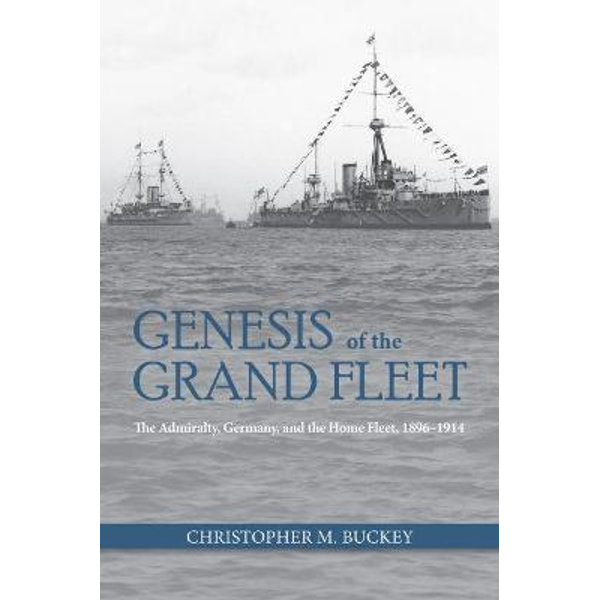
Genesis of the Grand Fleet: The Admiralty, Germany, and the Home Fleet, 1896–1914. By Christopher M. Buckey. Naval Institute Press, Annapolis, 2021
Reviewed by Greg Swinden
Recently published by the US Naval Institute this book is the result of over a decade of research concerning the pre – World War I Royal Navy and the creation of the Grand Fleet (also often known as the Home Fleet) prior to 1914.
Buckey studied at the University of Salford (Manchester, England) and produced his thesis ‘Forging the shaft of the spear of Victory: The creation and Evolution of the Home Fleet in the Pre-War Era 1900 – 1914’ in 2013. This book (with a less wordy title) is based heavily upon this thesis.
The author traces the long and complex trail of turning the outdated Royal Navy of the 1890s, focused on colonial policing while also arming against potential French and Russian enemies and an emerging German threat, into a modern and effective fighting force. A changing British domestic political focus also had a major impact, particularly the naval cost cutting after the Liberal Party victory in the 1906 General Election (and Prime Minister Campbell-Bannerman’s need to find the significant funds for old age pensions which were enacted in 1908). By this time France was no longer a prospective enemy due to the 1904 Entente Cordiale, which became the Triple Entente in 1907 when Russia also became a British ally (although the loss of much of her fleet in the Russo-Japanese War of 1904-05 certainly reduced the risk). By 1908 Germany, and its expanding High Seas Fleet, was regarded as the primary threat.
In 1907 the Home Fleet was created by the First Sea Lord, Sir John ‘Jacky’ Fisher to face the expected German threat. This often required the stripping of ships from the Atlantic, Mediterranean and other stations and absorbing the reserve divisions of warships previously under the control of the three Royal Navy home port commands. Due to financial pressures there were not enough ships to be allocated to each fleet or command. Modern day maritime strategists would recognise this as standard practice as there is insufficient funding, time or people to enable procurement of every defence capability required and hard, and often unpopular, decisions have to made.
The narrative also details the human dimension – particularly the bitter in-fighting within the Royal Navy senior leadership at the time (mainly between Fisher and the Commander-in-Chief of the Channel Fleet, Lord Charles Beresford whose ships were to be transferred to the Home Fleet). Other senior officers considered the increasingly centralised Admiralty control on their operations as a major flaw in replacing the previous independence of fleet and station commanders to operate their ships as they saw fit, thus a stifling of their command and initiative.
Ultimately the creation of the Home/Grand Fleet by Fisher, with significant help from Winston Churchill as the First Lord of the Admiralty, was bludgeoned through and time was to prove that the centralization of this force was crucial in blockading the German ports and starving Germany into submission. Notably, Fisher’s plan helped create the first fleet unit of the Royal Australian Navy following the 1909 Imperial Conference in London. This overturned previous anti-Australian navy sentiments in the Admiralty as it meant Australian ships, paid for by the Australian Government, would replace British ships on the Australia Station.
While a lengthy read the storyline details the significant issues confronting pre-World War I British naval policy and strategy and there are several themes still relevant today for those concerned with the strategic level of defence planning, force design and operations.



